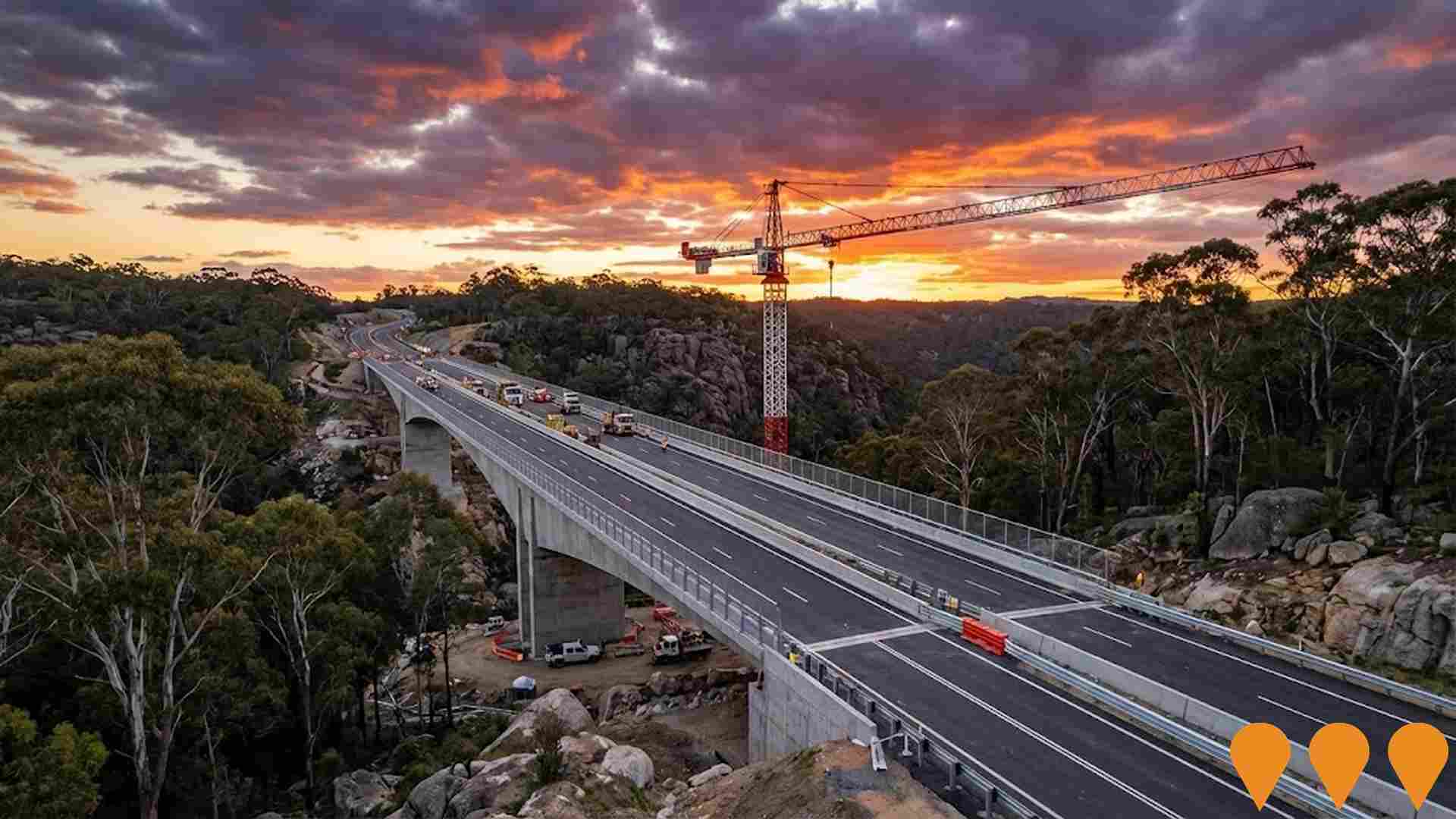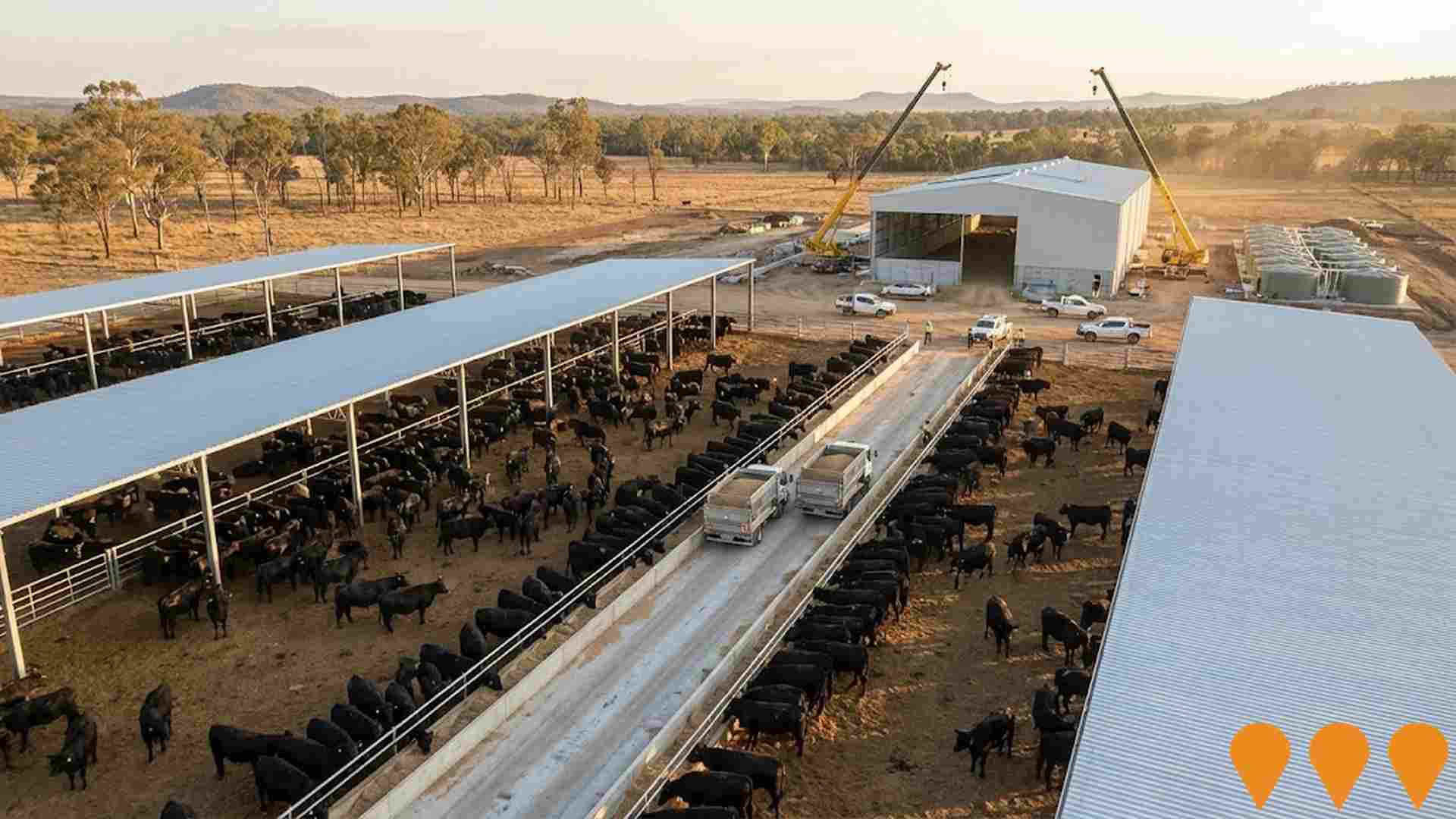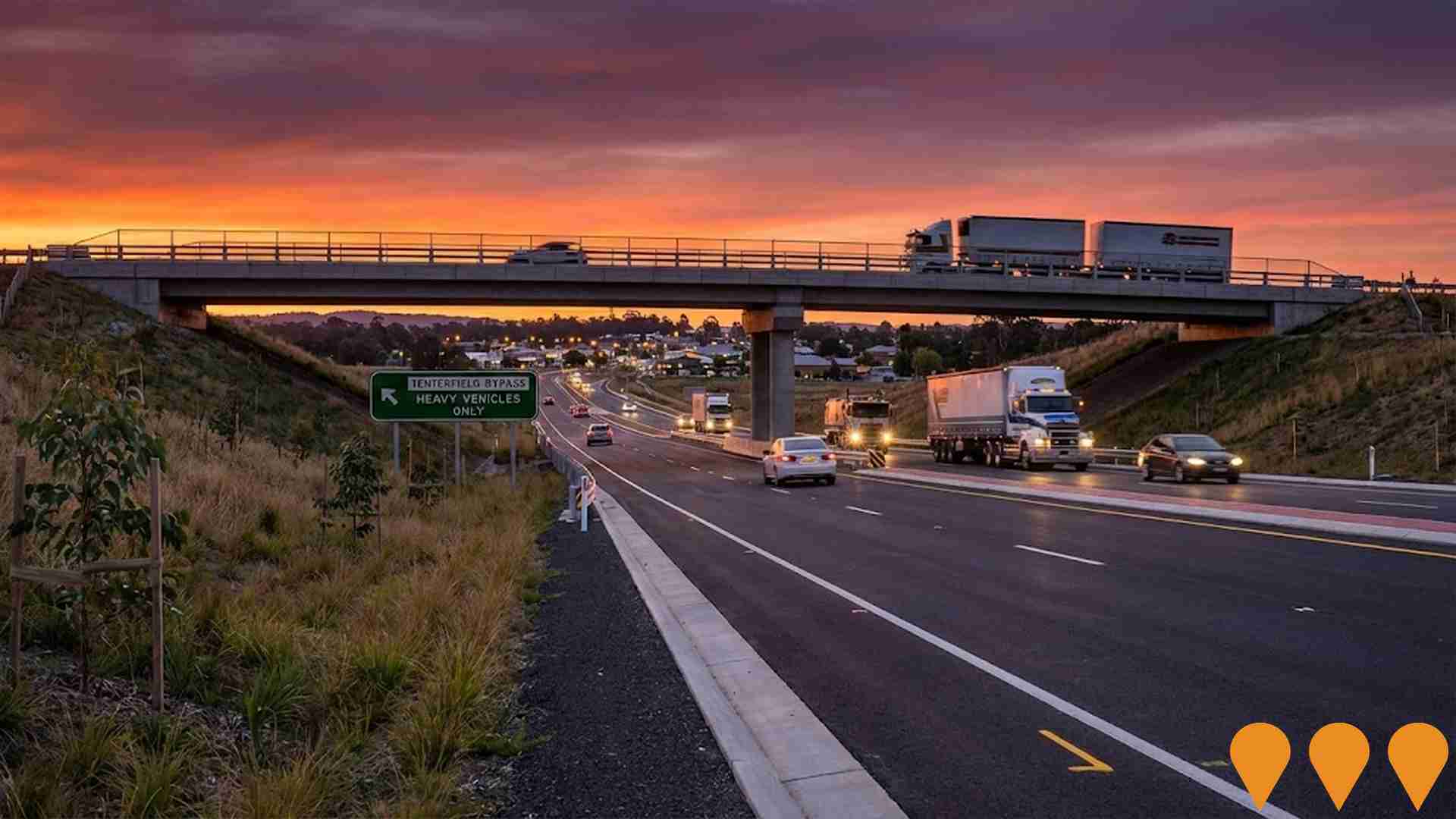Chart Color Schemes
est. as @ -- *
ABS ERP | -- people | --
2021 Census | -- people
Sales Activity
Curious about local property values? Filter the chart to assess the volume and appreciation (including resales) trends and regional comparisons, or scroll to the map below view this information at an individual property level.
Find a Recent Sale
Sales Detail
Population
Tenterfield has shown very soft population growth performance across periods assessed by AreaSearch
Based on AreaSearch's analysis, Tenterfield's population is around 7247 as of November 2025. This reflects an increase of 437 people, a 6.4% rise since the 2021 Census which reported a population of 6810 people. The change is inferred from the estimated resident population of 7088 in June 2024 and an additional 222 validated new addresses since the Census date. This level of population equates to a density ratio of 1 person per square kilometer, providing ample space per person. Tenterfield's growth exceeded the SA3 area (2.9%) and the SA4 region, marking it as a growth leader in the region. Population growth was primarily driven by interstate migration contributing approximately 83% of overall population gains during recent periods.
AreaSearch adopts ABS/Geoscience Australia projections for each SA2 area, released in 2024 with 2022 as the base year. For areas not covered, NSW State Government's SA2 level projections released in 2022 with 2021 as the base year are utilised. Growth rates by age group from these aggregations are applied to all areas for years 2032 to 2041. Projections indicate a decline in overall population, with the area's population expected to reduce by 603 persons by 2041. However, growth across specific age cohorts is anticipated, led by the 85 and over age group projected to grow by 199 people.
Frequently Asked Questions - Population
Development
AreaSearch analysis of residential development drivers sees Tenterfield recording a relatively average level of approval activity when compared to local markets analysed countrywide
Tenterfield has seen approximately 36 new homes approved annually. Over the past five financial years, from FY21 to FY25, around 180 homes were approved, with an additional 19 approved so far in FY26. On average, about 1.6 people have moved to the area for each dwelling built over these five years.
This suggests a balance between supply and demand, maintaining stable market conditions. The average construction cost of new properties is $235,000, which is below the regional average, indicating more affordable housing options. In FY26, there have been $3.7 million in commercial approvals, reflecting limited commercial development focus. Compared to the Rest of NSW, Tenterfield has 88.0% more building activity per person.
However, development activity has moderated recently. All recent developments have consisted of detached houses, preserving the area's traditional low density character and appealing to those seeking spacious family homes. The location has approximately 254 people per dwelling approval, suggesting potential for growth. Given that population is expected to remain stable or decline, Tenterfield may experience reduced pressure on housing, potentially presenting opportunities for buyers.
Frequently Asked Questions - Development
Infrastructure
Tenterfield has moderate levels of nearby infrastructure activity, ranking in the top 50% nationally
The performance of an area is significantly influenced by changes to local infrastructure, major projects, and planning initiatives. AreaSearch has identified 16 such projects that are expected to impact the area. Notable projects include Molesworth Street Bridge Replacement and Sewer Line Relocation, Tenterfield Heavy Vehicle Bypass, Haddington Aged Care Community Expansion, and Mt Lindesay Road Upgrade - Legume to Woodenbong. The following list details those projects likely to be most relevant.
Professional plan users can use the search below to filter and access additional projects.
INFRASTRUCTURE SEARCH
 Denotes AI-based impression for illustrative purposes only, not to be taken as definitive under any circumstances. Please follow links and conduct other investigations from the project's source for actual imagery. Developers and project owners wishing us to use original imagery please Contact Us and we will do so.
Denotes AI-based impression for illustrative purposes only, not to be taken as definitive under any circumstances. Please follow links and conduct other investigations from the project's source for actual imagery. Developers and project owners wishing us to use original imagery please Contact Us and we will do so.
Frequently Asked Questions - Infrastructure
Haddington Aged Care Community Expansion
Expansion of Haddington Aged Care Community adding 28 new private suites with ensuites, increasing capacity from 82 to 110 beds. The $11 million project features a country-style interior, advanced technology for resident care and staff efficiency, and supports permanent, respite, and memory support care. The new wing was officially opened in December 2024.

Molesworth Street Bridge Replacement and Sewer Line Relocation
Replacement of the flood-prone timber Molesworth Street Bridge over Tenterfield Creek with a resilient concrete structure to improve community connectivity and access to critical medical services during natural disasters. The project, funded by the Regional Roads Transport Recovery Package (approx. $9.988 million), also includes the relocation and betterment of the adjacent sewer line, which was damaged in early 2022. Geotechnical and planning work is complete, with construction scheduled to start mid-2025 and an active tender for bored piling closing in October 2025.

Emu Swamp Dam Project (Granite Belt Irrigation Project)
A proposed 12,074 ML irrigation dam and water-supply scheme on the Severn River, 15km south-west of Stanthorpe. It includes the dam, a pipeline distribution network, and irrigation channels for the Granite Belt region. The original Environmental Impact Statement (EIS) evaluation report lapsed in April 2023, and the project is currently being re-evaluated as part of the Queensland Government's Southern and Darling Downs Regional Water Assessment (RWA) due to increased cost estimates.

Pikedale Wind Farm
The proposed Pikedale Wind Farm is located approximately 20km west of Stanthorpe in Queensland's Southern Downs Renewable Energy Zone. The project comprises up to 204 wind turbines with a generation capacity of up to 1.3GW, along with battery energy storage system. The wind farm is expected to generate enough electricity to power around 647,000 homes and prevent 553,000 tonnes of carbon emissions annually. Squadron Energy completed community consultation in 2025 and is preparing to submit a development application to the State Assessment and Referral Agency (SARA) under Queensland's new impact assessment framework.
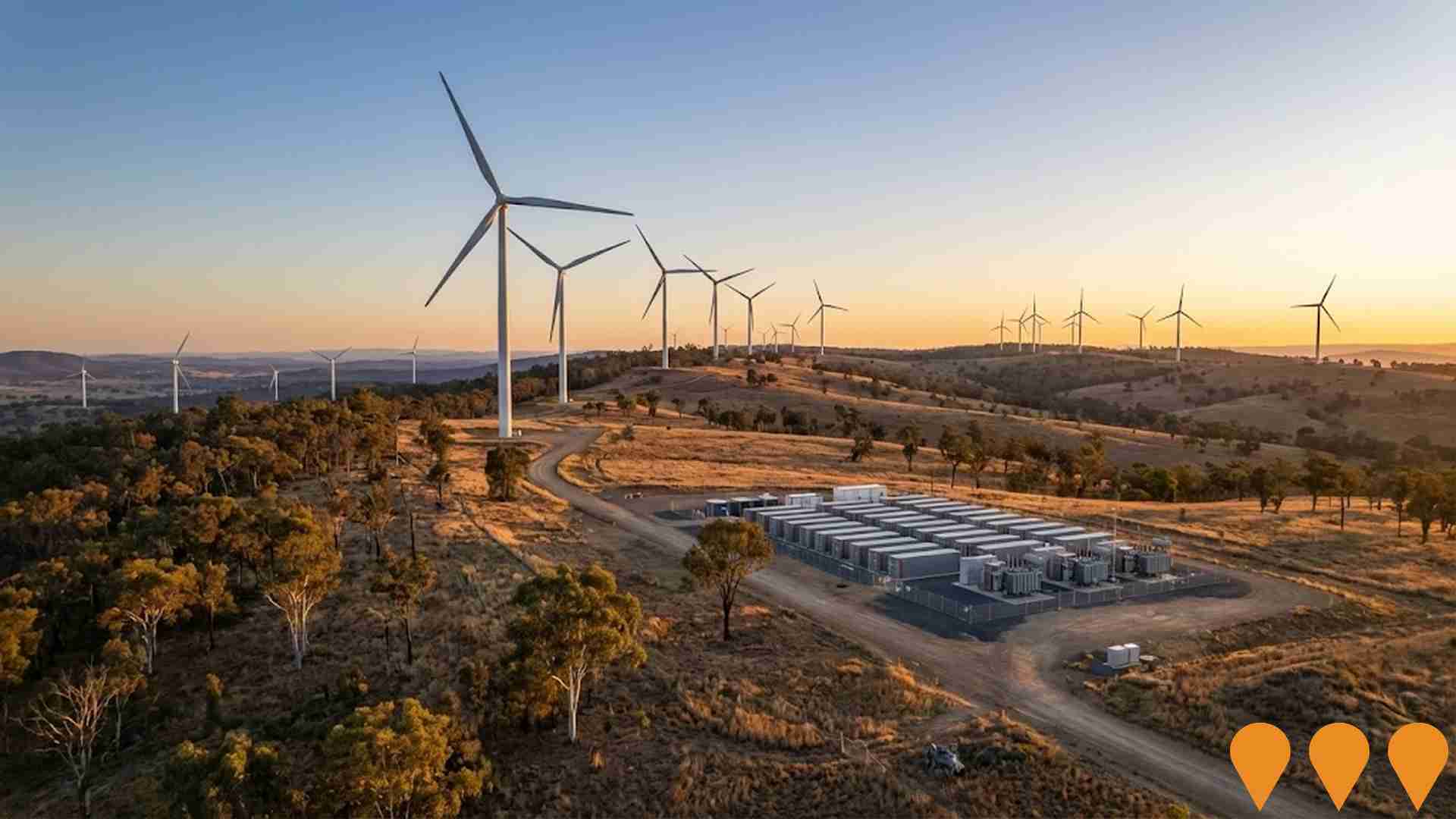
Bonshaw Solar Farm
Development of a 100MW AC solar farm with 300MW lithium-ion battery energy storage facility and associated infrastructure. The project features ground-mounted solar PV modules on single-axis tracking mounts connected to the existing 330kV Transgrid Dumaresq substation. Expected to generate 560GWh annually, powering approximately 70,000 homes and offsetting 600,000 tonnes of CO2 emissions per year.

Warwick Solar Farm
Large-scale solar photovoltaic facility designed to generate clean renewable energy for the Queensland grid. The solar farm features thousands of solar panels across multiple hectares with battery storage capacity to provide consistent power supply. The project supports Queensland's renewable energy targets and provides local employment during construction and operation phases.
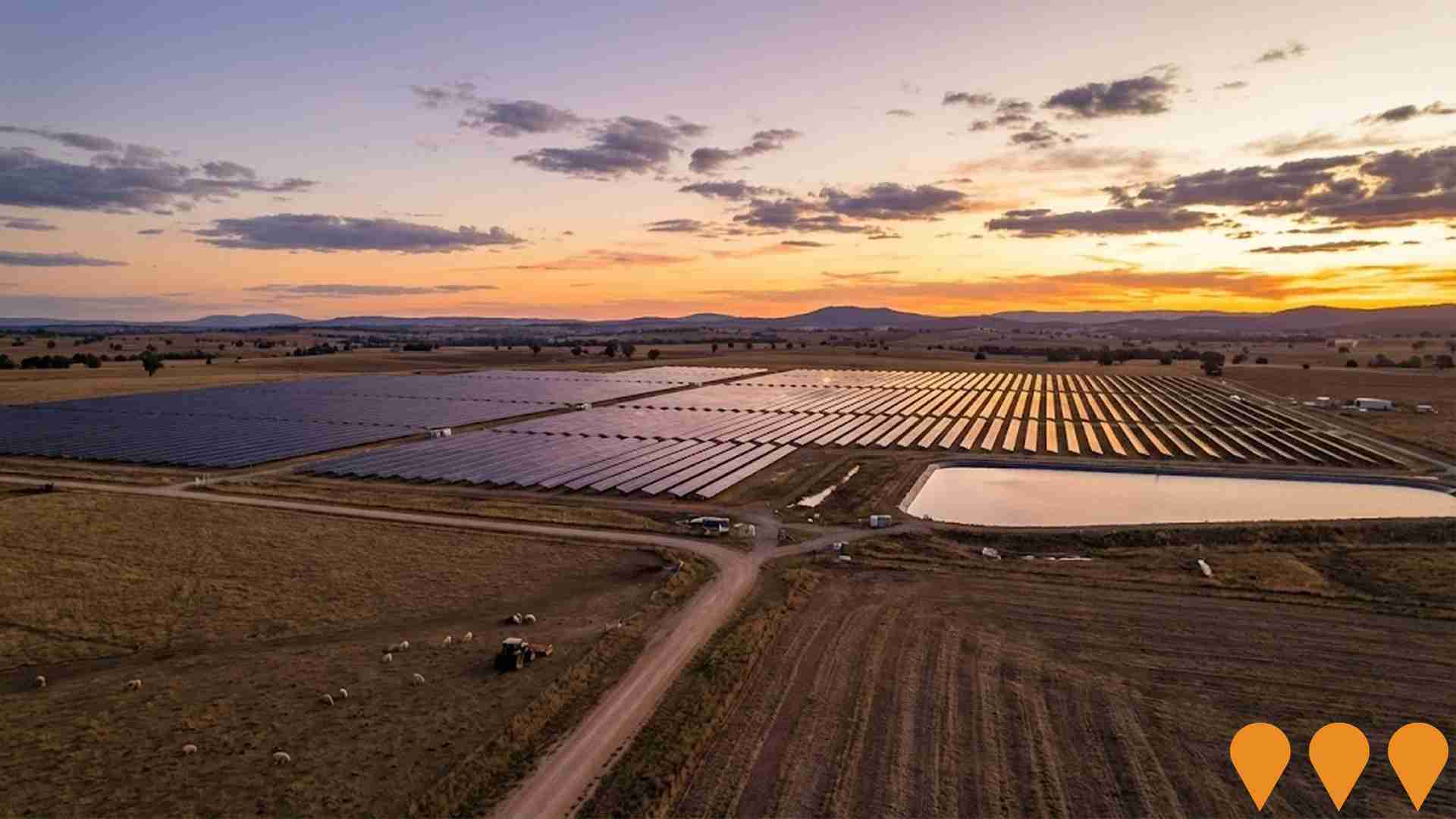
Stanthorpe Wastewater Treatment Plant Upgrade
Major upgrade of the aging Stanthorpe Wastewater Treatment Plant which has reached end of life. The project involves full design and renewal of the treatment facility using the latest technology to ensure capacity for growth, improved reliability, and compliance with changing environmental standards. Concept design has been completed and detailed design is underway before construction contractors are engaged.

14 Wallangarra Road Student Accommodation
Adaptive reuse of a former aged care facility (Stanthorpe Nursing Home) into student accommodation. The facility comprises a 1,437 square meter building with 45 bedrooms on a 3,826 square meter corner site close to the Stanthorpe CBD. The development will provide housing for regional students attending educational facilities in Stanthorpe, including the Queensland College of Wine Tourism and supporting medical and vocational training placements in the Granite Belt region.

Employment
Employment performance in Tenterfield has been broadly consistent with national averages
Tenterfield has a balanced workforce comprising white and blue collar jobs, with varied sector representation. The unemployment rate was 3.2% as of June 2025, below the Rest of NSW's rate of 3.7%.
Employment growth over the past year was estimated at 4.6%. There were 3,185 residents in work by June 2025, with workforce participation at 44.6%, compared to Rest of NSW's 56.4%. Dominant employment sectors include agriculture, forestry & fishing, health care & social assistance, and retail trade. Agriculture, forestry & fishing is notably concentrated, with levels 4.2 times the regional average.
However, health care & social assistance is under-represented, at 11.9% compared to Rest of NSW's 16.9%. Employment opportunities may be limited locally, as indicated by Census data comparing working population and resident population. Over the year to June 2025, employment increased by 4.6%, labour force grew by 3.5%, and unemployment rate fell by 1.0 percentage points. In contrast, Rest of NSW had an employment decline of 0.1% and a labour force growth of 0.3%, with a 0.4 percentage point rise in unemployment. Jobs and Skills Australia's national employment forecasts from May 2025 project national employment growth of 6.6% over five years and 13.7% over ten years, but growth rates vary significantly between sectors. Applying these projections to Tenterfield's employment mix suggests local growth of approximately 5.5% over five years and 12.0% over ten years, though this is a simplified extrapolation for illustrative purposes only.
Frequently Asked Questions - Employment
Income
Income metrics place the area in the bottom 10% of locations nationally according to AreaSearch analysis
Tenterfield's median taxpayer income in financial year 2022 was $34,208. The average income for the same period was $42,367. This is lower than the national averages of $49,459 for median income and $62,998 for average income, according to AreaSearch's aggregation of postcode level ATO data for Rest of NSW. Based on a 12.61% growth in wages since financial year 2022, estimated current incomes as of September 2025 would be approximately $38,522 (median) and $47,709 (average). Census data indicates that household, family, and personal incomes in Tenterfield all fall within the 1st to 3rd percentiles nationally. In Tenterfield, 34.0% of individuals earn between $400 - 799 weekly, contrasting with the broader area where the leading earnings band is $1,500 - 2,999 at 29.9%. The concentration of 46.2% in sub-$800 weekly brackets highlights economic challenges faced by a significant portion of the community. Despite modest housing costs allowing for 88.4% income retention, Tenterfield's total disposable income ranks at just the 4th percentile nationally.
Frequently Asked Questions - Income
Housing
Tenterfield is characterized by a predominantly suburban housing profile, with above-average rates of outright home ownership
Tenterfield's dwelling structures, as per the latest Census, consisted of 95.5% houses and 4.4% other dwellings (semi-detached, apartments, 'other' dwellings), compared to Non-Metro NSW's 93.0% houses and 6.9% other dwellings. Home ownership in Tenterfield stood at 58.1%, with mortgaged dwellings at 22.3% and rented ones at 19.6%. The median monthly mortgage repayment was $1,083, below Non-Metro NSW's average of $1,100. The median weekly rent in Tenterfield was $240, matching Non-Metro NSW's figure but significantly lower than the national average of $375. Nationally, Tenterfield's mortgage repayments were notably lower at $1,863.
Frequently Asked Questions - Housing
Household Composition
Tenterfield features high concentrations of lone person households, with a lower-than-average median household size
Family households account for 61.6% of all households, including 16.1% couples with children, 35.2% couples without children, and 9.6% single parent families. Non-family households make up the remaining 38.4%, with lone person households at 35.5% and group households comprising 2.9% of the total. The median household size is 2.1 people, which is smaller than the Rest of NSW average of 2.3.
Frequently Asked Questions - Households
Local Schools & Education
Tenterfield faces educational challenges, with performance metrics placing it in the bottom quartile of areas assessed nationally
The area has lower university qualification rates at 15.6%, compared to the NSW average of 32.2%. This indicates a need for targeted educational initiatives. Bachelor degrees are most common at 11.4%, followed by postgraduate qualifications (2.1%) and graduate diplomas (2.1%). Vocational credentials are prominent, with 39.5% of residents aged 15+ holding them - advanced diplomas at 9.8% and certificates at 29.7%.
Educational participation is high at 25.3%, including 9.6% in primary education, 8.3% in secondary education, and 1.7% pursuing tertiary education. Tenterfield has a network of 6 schools educating approximately 616 students. There are 5 primary and 1 secondary school serving distinct age groups. School places per 100 residents (8.5) are below the regional average (13.2), with some students likely attending schools in adjacent areas.
Frequently Asked Questions - Education
Schools Detail
Nearby Services & Amenities
Transport
Transport servicing is low compared to other areas nationally based on assessment of service frequency, route connectivity and accessibility
Tenterfield has 326 active public transport stops, all of which are bus stops. These stops are served by 28 different routes that together offer 293 weekly passenger trips. The accessibility of these services is rated as good, with residents on average being located 316 meters from the nearest stop.
On average, there are 41 trips per day across all routes, which equates to approximately zero weekly trips per individual stop.
Frequently Asked Questions - Transport
Transport Stops Detail
Health
Health performance in Tenterfield is a key challenge with a range of health conditions having marked impacts on both younger and older age cohorts
Tenterfield faces significant health challenges with various conditions affecting both younger and older age groups. Private health cover stands at approximately 46%, covering around 3,348 people, which is lower than the national average of 55.3%.
The most prevalent medical conditions are arthritis (13.5%) and mental health issues (9.1%). Conversely, 58.3% of residents report no medical ailments, compared to 61.0% in Rest of NSW. Tenterfield has a higher proportion of residents aged 65 and over at 33.0%, totaling approximately 2,388 people, compared to the Rest of NSW's 27.4%.
Frequently Asked Questions - Health
Cultural Diversity
Tenterfield is considerably less culturally diverse than average when assessed alongside AreaSearch's national rankings for language and cultural background related metrics
Tenterfield had a cultural diversity index below the average, with 88.1% citizens, 90.3% born in Australia, and 96.8% speaking English only at home. Christianity was the predominant religion, accounting for 59.9%. This figure is lower than the Rest of NSW's 64.8%.
The top three ancestry groups were English (31.5%), Australian (28.3%), and Irish (11.2%). Notably, German ancestry was overrepresented at 5.6%, compared to the regional average of 3.9%. Scottish ancestry also had a higher representation at 9.3% versus 8.4%. However, Australian Aboriginal ancestry was underrepresented at 5.1%, against the regional figure of 6.4%.
Frequently Asked Questions - Diversity
Age
Tenterfield ranks among the oldest 10% of areas nationwide
Tenterfield's median age is 55 years, which is higher than the Rest of NSW average of 43 years and the national norm of 38 years. The age profile shows that individuals aged 65-74 are prominent, making up 19.2% of the population, while those aged 25-34 comprise only 6.4%. This is compared to a national average of 9.4% for the 65-74 age group. Between 2021 and the present, the 0-4 age group has grown from 3.9% to 5.7%, while the 75-84 cohort has increased from 9.3% to 10.5%. Conversely, the 55-64 age group has declined from 17.5% to 16.1% and the 65-74 group has dropped from 20.4% to 19.2%. Looking ahead to 2041, demographic projections show that the 85+ age cohort is expected to rise substantially, increasing by 183 people (79%) from 232 to 416. This aging trend continues as residents aged 65 and older represent all of the anticipated growth. Conversely, population declines are projected for those aged 25-34 and 5-14 years old.

